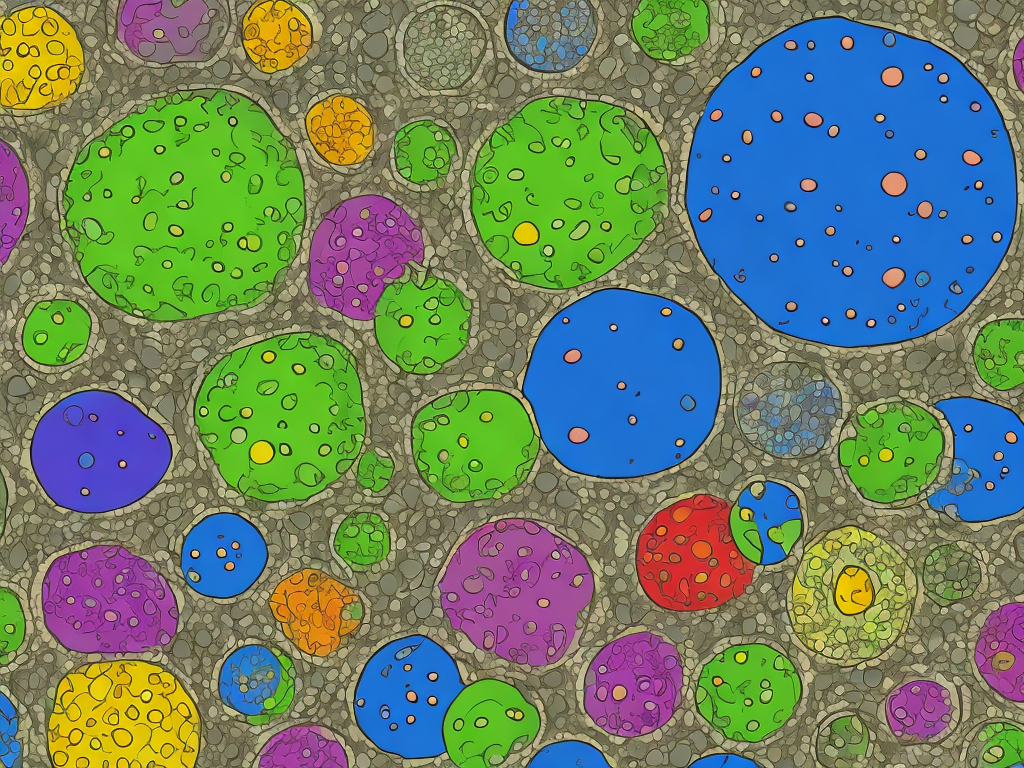
The Difference Between Prokaryotic and Eukaryotic Cells
Cells are the basic structural and functional units of all living organisms. They are small compartments that carry out various biological processes to ensure the survival and growth of organisms. There are two main types of cells: prokaryotic cells and eukaryotic cells. These cells differ greatly in terms of their structure and complexity. In this article, we will explore the key differences between prokaryotic and eukaryotic cells.
First and foremost, prokaryotic cells are simple and primitive, while eukaryotic cells are complex and advanced. Prokaryotic cells are predominantly found in bacteria and archaea, whereas eukaryotic cells are found in animals, plants, fungi, and protists. The main distinction between the two lies in the presence or absence of a nucleus.
In prokaryotic cells, the genetic material, which is in the form of circular DNA, is not enclosed within a membrane-bound nucleus. It is localized in the cytoplasm of the cell. On the other hand, eukaryotic cells have a well-defined nucleus that houses the genetic material, which is in the form of linear DNA molecules. The nucleus is separated from the cytoplasm by a double-membrane nuclear envelope.
Furthermore, prokaryotic cells lack other membrane-bound organelles, such as mitochondria, chloroplasts, endoplasmic reticulum, and Golgi apparatus. These organelles are present in abundance in eukaryotic cells. Mitochondria, often referred to as the powerhouse of the cell, are responsible for cellular respiration and energy production. Chloroplasts, found only in plant cells, are responsible for photosynthesis and converting sunlight into chemical energy. The endoplasmic reticulum and Golgi apparatus are involved in protein synthesis, modification, and transport within the cell.
Another key difference between prokaryotic and eukaryotic cells lies in their size. Prokaryotic cells are generally smaller in size, with an average diameter of 1-10 micrometers. Eukaryotic cells, on the other hand, are larger in size, with an average diameter of 10-100 micrometers. This difference in size is due to the complexity of the internal structures present in eukaryotic cells.
Structure-wise, prokaryotic cells have a simpler structure compared to eukaryotic cells. Prokaryotic cells have a cell membrane, which is a phospholipid bilayer that surrounds the entire cell. The cell membrane regulates the passage of molecules in and out of the cell. In addition to the cell membrane, prokaryotic cells have a rigid cell wall made up of peptidoglycan. This cell wall provides protection and support to the cell. However, not all prokaryotic cells have a cell wall. Some bacteria, such as Mycoplasma species, lack a cell wall.
In contrast, eukaryotic cells have a more complex structure. They have a cell membrane similar to prokaryotic cells, but they also contain other membrane-bound organelles within their cytoplasm. Additionally, eukaryotic cells have a network of protein fibers called the cytoskeleton, which provides structural support and aids in cellular movement. The cytoskeleton is absent in prokaryotic cells.
One of the prominent features of eukaryotic cells is the presence of a well-developed endomembrane system. This system includes the endoplasmic reticulum, Golgi apparatus, and vesicles. It aids in the synthesis, modification, and transport of proteins and lipids within the cell. As mentioned earlier, this system is absent in prokaryotic cells.
Another significant difference between prokaryotic and eukaryotic cells is the presence of specialized organelles for energy production. In eukaryotic cells, mitochondria play a crucial role in cellular respiration and energy production through the breakdown of glucose molecules. However, prokaryotic cells lack mitochondria. Instead, they carry out cellular respiration in the cytoplasm.
Moreover, prokaryotic cells also have a smaller and simpler ribosome structure compared to eukaryotic cells. Ribosomes are responsible for protein synthesis within the cell. In eukaryotic cells, ribosomes are capable of both cytoplasmic and membrane-bound protein synthesis. On the other hand, prokaryotic cells do not have membrane-bound ribosomes. They solely rely on cytoplasmic ribosomes for protein synthesis.
In conclusion, prokaryotic and eukaryotic cells exhibit significant structural and functional differences. Prokaryotic cells are simple, lack a nucleus, and lack membrane-bound organelles, while eukaryotic cells are complex, possess a nucleus, and contain various membrane-bound organelles. The size, complexity of structures, presence of specific organelles, and intracellular processes all contribute to the distinction between these two cell types. Understanding the differences between prokaryotic and eukaryotic cells allows for a better understanding of the diverse cellular processes and functions that occur within living organisms.
 Self-Instruct
Self-Instruct